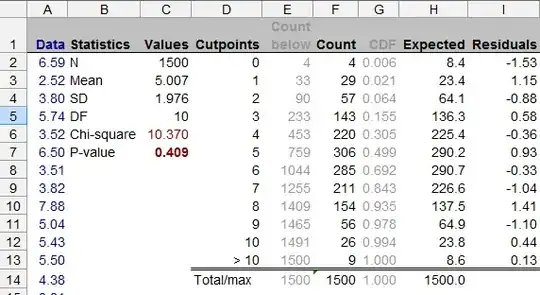1) No test will prove your data is normally distributed. In fact I bet that it isn't.
(Why would any distribution be exactly normal? Can you name anything that actually is?)
2) When considering the distributional form, usually, hypothesis tests answer the wrong question. What's a good reason to use a hypothesis test for checking normality?
I thought that the chi squared test or the Kolmogorov–Smirnov test provide a good indication about the distribution.
Read this
However, if not, what are some usecases they are good for?
That's debatable.
I can think of a few cases where it makes some sense to formally test a distribution. One common use is in testing some random number generating algorithm for generating a uniform or a normal.
3) If you want to test normality, a chi-squared test is a really bad way to do it. Why not, say, a Shapiro-Francia test or say an Anderson-Darling adjusted for estimation? You'll have far more power.
4) What do you mean by 'expected range', specifically?
by expected range I mean in the formula of the chi squared test the relative frequencies: ei=n∗pi
To have expected counts you need to split it up into subranges, and multiply the total count by the probability in the subrange.

